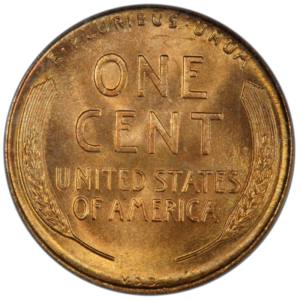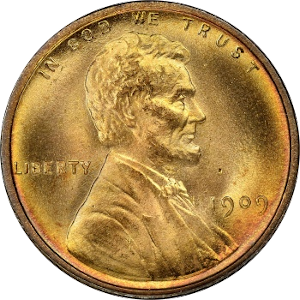Feeling Good About Stocks? Watch Out for Recency Bias
Posted on — Leave a commentIt turns out, investors have short memories.
If you have assets invested in the stock market, you might be feeling okay right about now.
Indeed, the stock market has rebounded smartly off the March lows.
The S&P 500 is still down on the year, but only a 3% decline – versus the stomach-wrenching 35% decline we lived through in March.
Do you believe the worst of the Covid-19 inspired stock market declines are behind us?
It feels easy to believe that right?
In fact, the jury is still out on whether this is a simply a bear market rally.
Nonetheless, it is all too common for investors to assume what has happened recently will continue to happen in the future.
Psychologists call this “recency bias.” It refers to the phenomenon where an individual more easily remembers recent events, compared to something that occurred in the past.
Simply put, the recency bias makes it easier for you to remember the recovery off the March lows than the sickening sell-off that began in February.
Here’s the rub. Investors often mistakenly rely on recency bias to make investing decisions.
It might not be wise to become too complacent about the stock market right now. It may be recency bias trying to trick you up.
Recent data shows that a lot of investors dumped stocks in February and March, during the stock market crash, and went to cash.
Assets in money market funds surged to a record-high $4.6 trillion recently, according to data from Refinitiv Lipper dating back to 1992.
If you are sitting on cash right now and feeling optimistic about the stock market. Consider how you may re-allocate those funds.
Major investment firms remain bullish on gold and are now advising high net worth clients to consider allocations to gold as a replacement (or partial replacement) for their bond allocation, given the paltry yields offered on U.S. Treasury securities today.
Don’t fall prey to this psychological investment trap. Don’t project recent experiences (the swift stock recovery) onto the future.
Right now, it may feel like it is smart to move back into a heavy weighting to equities. But, for investors who aren’t properly diversified, their portfolios could suffer – perhaps even dramatically – if trends change quickly.
When investors think about trading psychology, fear and greed usually pop to mind. However, there are deeper psychological biases at work – like the recency bias – that may impact how we think and act without even realizing it.
The lesson? Be cautious after big wins in the stock market. This is a time to rely on objective allocation principles. Be aware just after a big recovery rally in stocks, you may be vulnerable to bad investment decisions.
Never before has it been more important to seek out objective, expert investment guidance. If you moved to cash in February and March, give us a call and we can talk through scenarios that could be appropriate for your long-term investing goals and risk tolerance levels.
Want to read more? Subscribe to the Blanchard Newsletter and get our tales from the vault, our favorite stories from around the world and the latest tangible assets news delivered to your inbox weekly.
Monday Morning Wrap Up – June 29, 2020
Posted on — 3 CommentsHow Long before We See Gold Hit $2,000?
Did you wonder what would happen to the economy once the second wave of Covid-19 hits in the fall?
It turns out the first wave still isn’t over. In fact, it’s getting worse. Covid-19 infections are spreading like wildfire in hot spot states.
Last week, the U.S. recorded a new all-time daily high of Covid-19 cases – at 40,000 in one day. The U.S. now has 2.4 million confirmed Covid-19 cases – and 122,370 deaths – more than any other country. Texas and Florida governors hit the pause button on their reopening plans as those states became the new hot spots.
Covid-19 is indeed reshaping our economy in ways we never could have imagined and it will be months or years before we understand the new landscape we now live in.
Because of Covid-19, Microsoft announced it is permanently closing all physical stores, while retail employees will continue to serve customers remotely and digitally. Hilton Hotels announced it laid off 22% of its corporate staff as business and personal travel could take months or years to return to its pre-Covid-19 levels.
Markets react
In the midst of this news, the stock market cratered last week as investors began to question the market’s swift recent recovery.
And, gold soared to a new 8-year high! With gold closing in on the $1,800 an ounce level, new all-time highs are within easy reach this year.
New economic data
Last week, the government reported a 4.2% drop in personal income in May. If consumers don’t have money, they can’t spend it. The recession isn’t over for millions of American. The latest jobless claims report saw another 1.48 million people file for unemployment insurance benefits.
Presidential election looms
Recent polls show Democratic contender Joe Biden beating out incumbent President Donald Trump. There are still several months before Election Day and sentiment may change. Yet, this looms as a major turning point for the country in 2020.
Early insights reveal expectations that a ‘clean sweep’ for Democrats would hold back the stock market. Why? In large part because that could pave the road for higher corporate taxes and a reversal of the sweeping tax cuts that were put into place under the current Administration. Expect election news to move front and center into daily headlines in the weeks ahead.
Wall Street Embraces Gold
Wall Street is turning to gold in 2020 like never before. From Goldman Sachs, to BofA Global Research, big firms are bullish on the prospects for gold ahead.
A June 24 BofA Global Research report was titled: “Another GOLDen breakout = Stay bullish”
The firm stated that gold is breaking out to the upside, which is in line with their “secular call a year ago targeting $2,114 -$2,296” an ounce.
How long before we see Gold $2,000?
With the country in the worst recession since the Great Depression, the Fed on a money printing binge, social unrest at the highest level in decades and a major President Election just months away, we could see gold hit $2,000 faster than you think.
U.S. dollar won’t be king forever
As the Fed continues to degrade the value of fiat money by printing trillions of new dollars just this year in an effort to stoke economic growth, it puts the future of the U.S. dollar’s supremacy at risk.
For now, we have the benefit of being the “reserve currency” of the world. At this pace of money printing, it is only a matter of time before the U.S. falls from that pedestal. The result won’t be pretty for America. We are talking the potential for sky high interest rates as foreign governments will no longer have any incentive to buy our government debt.
Mainstream money managers are talking about this now.
Scott Minerd, the chief investment officer of Guggenheim Investments, thinks investing in gold could help offset any concern about the status of the U.S. dollar as a global reserve currency, according to recent Bloomberg article.
“With the Fed going all-in on financing the government deficit, the U.S. dollar could be at risk to negative speculation of its status as the dominant global reserve currency,” Minerd said.
With so much uncertainty, it’s no surprise investors big and small, domestic and foreign, continue to turn to gold.
While gold is creeping quietly higher, now is your chance to add gold to your portfolio before it scales the $2,000 mark. Do you own enough gold to hedge, protect, preserve and grow your wealth for now and the future?
Wishing you a Happy Fourth of July!
David
What is the M2 Money Supply and What Does it Mean for Gold?
Posted on — 1 CommentWe live in a historic period in which the US economy is experiencing a massive inflow of money. This tidal wave will have a meaningful impact on all investments, including gold. To understand why, one must first understand the M1 and M2 money supply.
The M1 money supply is a measure of currency in an economy. This category includes physical currency, demand deposits, negotiable order of withdraw accounts, and travelers’ checks. These are forms of currency that are highly liquid because they can be used almost immediately for a purchase.
In contrast, the M2 money supply represents the total amount of both the M1 supply and “near money” which includes less liquid assets like savings accounts, money market accounts, and certificates of deposit. The Federal Reserve has the power to influence the M2 money supply by using a variety of tools. For example, the Fed can change the reserve ratio which dictates the amount of reserves a bank must carry against total deposits. When the ratio drops banks are in a position to increase their lending which drives up the money supply. Additionally, the Fed can raise or lower the discount rate which influences the money supply because with a lower rate it becomes more affordable for banks to borrow more. The Federal Reserve can also purchase issued securities like Treasury bills from banks which will also increase the M2 money supply.
In mid March of this year, the US saw a dramatic increase in the amount of M2 money in our economy. In fact, when compared to the same point in 2019, the M2 supply has increased approximately 12%, representing the largest jump in over a decade.
This increase has coincided with an increase in gold prices in recent months which is a phenomenon we have seen before. In 2011, gold reached a historic high of $1,900 an ounce just as the M2 money supply surged above 10 percent on a year-over-year basis. This heightened level of M2 money supply is likely to persist for the long-term given the Fed’s recent announcement that they plan to keep interest rates near zero until 2022.
However, the increase of M2 totals and the corresponding rise in gold prices is more than an economic factor. It is also a psychological one because investors are witnessing the debasement of the US dollar. Debasement is the lowering in value of a currency as a result of a government printing more money. In these circumstances, investors often seek more stable forms of currency that will not be negatively impacted by the Federal Reserve’s stated goal of maintaining a low interest rate and thereby keeping the M2 money supply elevated.
In uncertain times investors look for more than a return, they look for consistency. As the value of the dollar comes under scrutiny in the US and abroad, investors are turning to gold investment as a store of value and a rare place to grow wealth as low interest rates reduce the earning potential of many other investments.
Want to read more? Subscribe to the Blanchard Newsletter and get our tales from the vault, our favorite stories from around the world and the latest tangible assets news delivered to your inbox weekly.
Are the headlines confusing you, too?
Posted on — Leave a commentNo doubt, you’ve been both comforted and confused by the strong rebound in the stock market in recent weeks. You aren’t alone.
Speculators run the show these days. And that only lasts so long before it falls apart.
The Speculative Day Trading Mania of 2020
We are seeing a stock market mania and a bubble – while we are in a recession!
There is a reason for the massive disconnect in the stock market and the real economy.
Day traders.
Have you heard? A new crop of amateur traders have jumped onto the day trading bandwagon during the pandemic and helped drive the stock market up about 40% off its March low.
Ever since online brokerage firms moved to the $0 trading commission model back in October, new accounts opened by individual (retail) traders skyrocketed. The data backs this up.
The perfect storm
The Covid pandemic created a situation ripe for this new day trading mania.
Day trading surged in recent months as millions of Americans were deprived of their sports teams to watch (and bet on) and were stuck at home under shelter-in-place orders. The newly minted $0 trading fees lured thousands of new day traders into the stock market game.
Indeed, we have a recipe for a new speculative bubble. If you are remembering back to the Dot.com crash in 2000, you’ve got a good memory. Before it was over, the NASDAQ index crashed 78%.
The Robinhood traders
They call them the Robinhood traders, based off a new mobile phone trading app company that offers fractional shares. Sure, buy a piece of a stock for $1, $15 or whatever you’ve got.
In recent months, equity inflows are at seven times their pre-Covid levels, to nearly $3 billion a day, CNBC reported on June 11.
Warning: They have no idea what they are doing
This new breed of day traders is creating chaos in the stock market. Trading off apps on their cell phones. With no knowledge of markets, fundamentals, or valuations, these day traders are trading on whims, ticker symbols that sound familiar and have driven two companies in bankruptcy up over 300% in days.
Just a couple of weeks ago, an obscure Chinese online real estate company’s American depository shares (ADSs) skyrocketed 1,250% intraday before closing 400% higher. The reason?
The company name – FANGDD Network – was similar to the acronym FAANG, which refers to the high-flying technology stocks: Facebook, Apple, Amazon, Netflix and Google.
Yep. The day traders jumped on the bandwagon and bought an obscure Chinese company because they mistakenly assumed by the ticker that it related to U.S. tech stocks.
The speculators are running the stock market show right now.
Hint. This won’t end well.
Indeed, the recent 1,800 point sell-off in the Dow warned of what could lie ahead.
Retail investors are often called the “dumb” money, while institutional traders – Wall Street pros – are called the smart money.
What are smart money investors saying now?
The day trading boom pushed stock market euphoria to its highest levels in 18 years. Citi’s research team warned in early June, that the bank’s Panic/Euphoria model hit its highest euphoria reading since 2002. What does that imply? A 70% plus probability of a down market in the next 12 months, Citi’s chief U.S. equity strategist said.
Rely on Gold
Now is the time for you to prepare your portfolio!
Take advantage of the safety, security and diversification properties of physical gold. Gold is already up 15% this year, with smart money investors forecasting new all-time highs within a year.
Gold is your safety net in all types of storms. This new speculative bubble in stocks is looming like a black cloud on the horizon. The bubble will burst. They always do. Take out an insurance policy now to protect your wealth now by increasing your allocation to physical gold. Remember the NASDAQ fell 78% from 2000-2002. You can prepare now for whatever lies ahead.
Monday Morning Wrap Up – June 22, 2020
Posted on — Leave a commentFed to the Rescue. Again.
You may have heard the saying, “Don’t Fight the Fed.”
Last week, the Fed once again turned fear into greed and boosted stocks with an unexpected announcement that it will start buying individual corporate bonds.
Whatever it takes. Yes, indeed.
No matter the future cost, the Fed valiantly continues to support the bubble in risky assets, known as the stock market.
No matter how far the stock market valuations differ from the underlying economic picture, the Fed is all in, willing to do whatever it takes to keep the stock market and liquidity train running.
Until they can’t.
Jeffrey Gundlach, founder and chief executive of DoubleLine Capital, warned recently about the inability of “Superman” Fed Chairman Jerome Powell to save the stock market.
Looking ahead, the billionaire money manager expects the stock market to fall from its “lofty” perch as he foresees corporate credit downgrades and a wave of white-collar layoffs ahead.
And, gold? Gundlach forecasts a move to new all-time highs for gold ahead.
Mixed Economic Signals
Fed Chairman Jerome Powell appeared before Congress last week in his semi-annual testimony and warned about the “potential longer-term damage” from permanent job losses and business closures due to the Covid pandemic.
In the midst of these dire warnings, May retail sales snapped back hard with a 17.7% gain last month. Chalk it up to major pent-up demand after consumers sheltered in place for months.
Looking ahead, capacity in some sectors, like eat-in dining, remains severely limited by social distancing requirements.
Also, the extra $600 in weekly unemployment insurance is set to end at the end of July, which could once again dampen retail sales.
People Are Still Getting Laid Off …
The number of people who lost their jobs last week and filed for unemployment benefits stands at almost twice as much as the 2008-09 recession. A total of 1.5 million people applied for unemployment benefits last week, plus another 760 thousand gig workers filed through a special Pandemic Unemployment Assistance program for unemployment compensation.
Over 2.2 million additional people were thrown out of work last week. And, no matter how many corporate bonds the Fed buys, those people still won’t have a regular paycheck.
Covid Cases Jump in Some States
In Texas, hospitalizations due to Covid jumped 11% last week, while the list of states reporting record-high daily cases hit nine. While economists talk about what the second wave could do to the economy, we still haven’t finished the first wave.
Meanwhile, November Presidential Election Looms
Polls last week revealed that Joe Biden edged ahead in the polls by more than 8% to President Donald Trump. Much could change over the next five months, but this remains a key flashpoint in 2020.
As social unrest hit the highest level in decades, a health crisis gripped our nation and a recession forced millions of Americans out of work. The November vote will be a significant election for the economy and the markets. Stay tuned.
Gold Stands Strong
In the midst of the recent stock market recovery off the March lows, it is useful to note that gold maintained its double-digit gains that emerged since the start of 2020.
Gold is up 14% year-to-date and stands at an 8-year high.
In the midst of the uncertainty and the stock market rebound, gold continues to perform well.
Indeed, last month the World Gold Council stated that “Gold is a clear complement to stocks, bonds and alternative assets for well-balanced US investor portfolios. As a store of wealth and a multi-faceted hedge, gold has outperformed many major asset classes while providing robust performance in both rising and falling markets.”
The WGC explained the four ways that holding gold can support your portfolio:
- Generate long-term returns
- Act as an effective diversifier and mitigate losses in times of market stress
- Provide liquidity with no credit risk
- Improve overall portfolio performance
Many economists and hedge fund managers warn that another leg down in the stock market is just around the corner. Consider using this time now to prepare and get ahead of the next selling phase with an increased allocation to gold.
Parting Words
Gold is money. Everything else is credit. – J. P. Morgan
Best Wishes,
David
The Controversy Over the VDB Lincoln Cent
Posted on — 1 Comment Throughout history only a few men rose to such prominence to be instantly recognized by their initials. Oh, there’s a few of course. Like FDR, JFK and LBJ.
Throughout history only a few men rose to such prominence to be instantly recognized by their initials. Oh, there’s a few of course. Like FDR, JFK and LBJ.
Within the numismatic world, expert collectors instantly recognize the initials VDB.
Who is VDB?
Victor David Brenner. If you haven’t heard the story, pour yourself a cup of tea and settle in for a treat.
Born Viktoras Barnauskas on June 12, 1871 in Shavli, Lithuania, Brenner immigrated to America arriving in 1890. Eventually, Brenner became a New York City jewelry engraver. However, his true passion was medals, sculpting and numismatics too!
Brenner honed his artistic sculpting and engraving skills, spending three years in Paris studying art and improving his craft. By 1906, Brenner returned to New York City and rose to prominence as his artistic fame grew. He created hubs and dies to make medals.
One of his most sought after pieces was a plaque of President Abraham Lincoln.
His talent caught the eye of President Theodore Roosevelt. In 1908, the President hand-picked Brenner to design a medal commemorating the Panama Canal.
Around this time, it was just after the passing of renowned artist and coin designer, Augustus Saint-Gaudens in 1907, the U.S. Mint was on the hunt for new designers.
President Roosevelt wanted a new coin to honor the 100th anniversary of Abraham Lincoln’s birth (1809-1909). He explored the idea of featuring an image of Lincoln on the coin as he considered and ultimately accepted the proposal submitted by Victor David Brenner.
Unlike Saint-Gaudens, Brenner was a passionate numismatist himself.
In 1894, Brenner had joined the American Numismatic and Archaeological Society. Also, Brenner was one of the original founders of the New York Numismatic Club, which regularly met at Keen’s Old English Chop House, a fancy restaurant for the well-to-do.
First Regular Issue US Coin To Feature a Real Person
Replacing the Indian head cent, the public eagerly anticipated the release of the new Lincoln cent in 1909.
Indeed, this was the first ever regular issue coin in American history to feature a real person!
On August 2, 1909, the police were called in to keep the crowds in order, as the coin was distributed for the first time at the Sub-treasury building on Wall Street. Newsboys famously took advantage of the huge demand, nearly doubling their money after braving long lines selling their Lincoln cents at three for a nickel.
Within a few short days, controversy and scandal broke out over Brenner’s initials V.D.B on the reverse.
Complaints emerged over the size and placement of the initials.
Indeed, Treasury Secretary Franklin MacVeagh approved the coin’s design months before the release. Dodging responsibility for the initials, MacVeagh said he had not noticed the offending V.D.B.
There is no actual proof. But, historical anecdotes suggest that U.S. Mint Chief Engraver Charles Barber held a grudge since he was passed over for the honor of creating this coin and that he helped fuel the initials controversy.
Swiftly only a few days after production began, MacVeagh sent a message: “Stop the mints!” He halted production of the coin and ordered the initials removed.
In that short time, however, almost 28 million cents were struck in Philadelphia and 484,000 at the San Francisco Mint.
The public caught wind of this and, amid rumors that VDB cents would be recalled and destroyed, people hoarded the brand new coins.
The lasting result is that some 1909 cents feature the V.D.B. initials, while most do not.
Interestingly, the initials were restored in 1918.
This Beloved Coin is Essential to Any Complete Lincoln Cent Collection
The Lincoln cent was the only coin ever designed by Brenner, but his tribute lives on as one of the most popular and widely used coins in American history.
Highly prized and hard to find.
Want to read more? Subscribe to the Blanchard Newsletter and get our tales from the vault, our favorite stories from around the world and the latest tangible assets news delivered to your inbox weekly.
Monday Morning Wrap Up – June 15, 2020
Posted on — Leave a commentA wake-up call hit Wall Street last week.
The Dow plunged over 1,800 points in one day, or 6.9%, chalking up the worst day since March.
Rightly so, many have questioned the stock market’s near vertical rally in recent weeks, while the pandemic rages on and many businesses are a skeleton of their former selves.
Last Thursday, the excessive optimism collided with reality and stocks plunged.
Signs that coronavirus cases are surging in some states with new “hot spots” emerging in places like Arizona, Texas and Utah, triggered the sell-off. Confirmed Covid cases in the U.S. topped two million last week and over 113,000 people have died, according to Johns Hopkins University data.
The economy has reopened. And, government officials reveal there is little interest in closing it back down as cases surge. Yet, the virus has not been tamed.
This dose of reality, that the country and businesses aren’t going to suddenly ‘get back to normal,’ hit Wall Street investors head on last week.
Indeed there is incredible progress underway, with over 160,000 potential vaccines in the works for Covid. Even if a vaccine is approved within 6-12 months, there is not enough manufacturing capacity to quickly churn out the 400 million vaccines that would be needed to protect every American.
Progress is being made. But, there remains a long road ahead before our daily lives and the economy will return to normal.
It’s Official – We Are In a Recession
Last week, the National Bureau of Economic Research (NBER) told us what we already knew. The U.S. entered a recession in February.
That marked the end of the record-long 128-month expansion in U.S. history, going back to 1854 when record keeping began.
Last week’s quick plunge in the stock market revealed that investors are no longer confident that a “V” shaped recovery in the economy is likely.
The Covid pandemic is still with us, and will likely be an overhang on economic growth for the foreseeable future.
Fed Chief Powell Warns Of Long Road to Recovery
In a somber message to the country last week, Federal Reserve Chairman Jerome Powell predicted a slow recovery for the U.S. economy in the wake of the deepest recession since the Great Depression.
He expected unemployment to fall to 9.3 percent by the end of 2020, leaving millions of Americans still without a paycheck.
“My assumption is there will be a significant chunk … well into the millions of people, who don’t get to go back to their old job … and there may not be a job in that industry for them for some time,” Powell said last week.
Notably, the safety net created by Congress will disappear for many Americans on the low end of the income spectrum. In July, the extra $600 a week in unemployment benefits expires. Many economists are concerned that jobs will likely still be scarce at that time.
It’s the ripple effect that can hold the economy down.
Unemployed people can’t spend. That means businesses like day care centers, hair salons, gyms, restaurants will see less money coming in. Those businesses will suffer and can’t hire new workers, and may need to lay more employees off. Those unemployed people can’t pay their rent. Landlords then are put in a tight spot and may not be able to pay their mortgages. It’s a vicious cycle that spills over into every aspect of the economy.
Remember the dot.com bust?
Just because the stock market climbed in recent weeks doesn’t mean the economy is okay. To the contrary. It’s been excessive optimism and a whole new crop of day traders driving the stock market higher in recent weeks.
Indeed, as professional sports have shut down, day trading activity surged at low-cost, discount brokerages around the country. The usual sports betting set, looking for excitement, turned to day trading as the country was under shelter-in-place orders.
In fact, the day-trading boom that helped drive stock-market euphoria to its highest level in 18 years, increases the odds the stock market will retreat once again within the next year, Citi told its clients in a research note on June 5.
No wonder, sound-minded investors are pouring money into gold this year, for safety, security and as a vehicle to preserve and protect their wealth.
Fed Pledged to Keep Interest Rates at Zero Through 2022
At last week’s Fed meeting, the central bank pledged to keep the benchmark fed funds rate at 0% – 0.25% through 2022.
Never before in history, has the Fed come out and stated that interest rates will be so low for so long. Monetary policy has reshaped the normal movement in the Treasury and interest rate markets.
Rates are being artificially suppressed at zero and will stay down for years.
Who does that hurt? Savers. Older Americans who need to reduce their risk profile on their portfolio as they age. Where can Americans safely park their assets? Certainly not in the stock market.
Gold is Up Nearly 15% in 2020
Throughout it all, Americans are rushing into the gold market seeking the safety and security of precious metals.
Huge demand for precious metals and the safety they provide drove premiums on New York gold futures up sharply in recent weeks and months. The result? Banks have been flying in tons of physical gold to New York to store the bullion in Comex vaults.
“Gold has reached America from all over the world,” said Allan Finn, commodities director at Malca-Amit, a company that transports gold securely. “The flows into New York are unprecedented,” he told the Wall Street Journal last week.
As the paper gold markets gyrate and see dislocations, it once again underscores the peace of mind, stability and security of owning your own tangible assets.
Physical gold ownership means you can hold your gold in your hands and store it safely in a home safe or a bank safe deposit box.
Indeed, there’s no substitute for physical gold ownership in today’s rapidly shifting digital world.
Best,
David
Quantitative Easing Expands To Emerging Market Nations
Posted on — Leave a commentIt turns out money printing isn’t just for rich nations any more.
Emerging market countries like Chile, Costa Rica, Croatia, Hungary, Indonesia, Poland, Romania, the Philippines, South Africa and Turkey are taking a page from the developed nation’s monetary policy playbook this year.
In an effort to combat the economic slowdown foisted onto the world by Covid-19, emerging market central banks are playing copycat to the United States by buying bonds of various kinds in a new asset purchase programs, also known as quantitative easing.
What is quantitative easing (QE)?
Quantitative easing, often called money printing, describes an unconventional monetary policy dreamed up by advanced nation central bankers a decade ago – to combat the 2008 global financial crisis.
In November 2008, the U.S. Federal Reserve began quantitative easing – extremely controversial at the time – in an attempt to keep the American economy afloat during the credit crisis meltdown.
Essentially, the Fed expanded its balance sheet (by creating new money) and then began buying bonds with that new money.
The Fed expanded its balance sheet from $870 billion in August 2007 to an all-time record high of $7.21 trillion today. That’s a lot of new money created over the past decade. Several trillion of that occurred in just the past few months as the Fed pledged to do whatever it takes to support the economy during the Covid crisis.
In our largely electronic banking system, the Fed simply adds money to its digital balance sheet and then uses that “money” to buy bonds. This, of course, dramatically increases our nation’s money supply.
Other rich nations like the UK and Japan also instituted these money printing policies back in 2008.
Fast forward to today
Not everyone thinks it is a good idea for emerging markets to join the money printing party.
“I don’t think it is either advisable or necessary for emerging markets to go into QE right now,” said Divvuri Subbarao, governor of the Reserve Bank of India from 2008-2013 told Reuters on May 6. “It is not necessary. They have enough conventional instruments available and they can still cut rates now,” he added. “And also, central banks are taking on a credit risk, and I don’t think emerging market central banks are in a position to take on such a credit risk.”
Our neighbor to the north
The Bank of Canada is also falling back on the ‘quantitative easing’ policy in an attempt to ease recessionary conditions inspired by Covid-19. In April, the Bank of Canada began buying $5 billion of Canadian government bonds each week. Similar to the U.S. Fed stance (whatever it takes), the bank of Canada pledged to continue to do this until the economy recovered.
What’s the big deal?
The 2008 global credit crisis was the first time that central banks got involved in “credit creation” or money printing.
The big concerns by many mainstream economists?
Hyperinflation and people needing wheelbarrows full of money to buy a loaf of bread.
What about gold?
Countries around the world are adding on more government debt and massively expanding their paper money supplies. This is a startling combination of questionable monetary and fiscal policies that leads many economists today to warn that our nation could be close to “monetizing our debt.” That would simply mean that when Congress spends more money, the Federal Reserve prints more money to buy the bonds to fund the deficit spending.
In the midst of this monetary policy shenanigans, the United States remains the world’s largest holder of gold, officially that is.
There are many mainstream policy watchers that believe that China’s official gold holdings are vastly under-reported and that China could indeed hold more gold than the U.S.
For now, all we have are official numbers.
June 2020
Tonnes
- United States 5
- Germany 6
- IMF 0
- Italy 8
- France 0
- Russian Federation 7
- China PR Mainland 3
- Switzerland 0
- Japan 2
- India 0
Source: World Gold Council
Central banks are buying gold in 2020
In the midst of the Covid-inspired money printing frenzy, central banks are buying gold, real money. In the first quarter of 2020, Turkey, Russia, India, UAE, Kazakhstan and Uzbekistan all bought gold.
It’s no surprise that the central banks that can are buying gold.
Why not trade paper money that is becoming increasingly devalued for gold, a tangible asset that can’t be desecrated by a central bank printing press.
In 2020, it’s becoming increasing clear that central bankers around the world have grown bolder since the 2008 global financial crisis.
Quantitative easing is becoming an accepted practice and money printing is spreading to emerging markets as Covid wreaks havoc on the global economy.
But, in the end, will we simply be awash in paper money that has increasingly less and less actual value?
Want to read more? Subscribe to the Blanchard Newsletter and get our tales from the vault, our favorite stories from around the world and the latest tangible assets news delivered to your inbox weekly.
What is Happening to the Gold Supply Chain?
Posted on — Leave a commentGold prices are often cited as a simple example of how supply and demand works. However, beneath this basic dynamic is something far more complex: the gold supply chain. Supply involves more than just mining yields. It also involves intricacies like recycling operations, transportation, and refinery  activity. In the months following the COVID-19 outbreak, all three of these components have experienced significant shocks.
activity. In the months following the COVID-19 outbreak, all three of these components have experienced significant shocks.
Consider gold recycling, which commonly represents approximately 25% to 30% of the available supply. Of this total, an estimated 90% is considered high-value gold consisting of jewelry. The remaining 10% is industrial recycled gold sourced from electrical components. This portion of the total, while small, has great potential as technology continues to expand its out-sized role in our lives.
Research from the World Gold Council determined that even the high point of gold recycling (2009) captured only 1% of the above ground stock. The 2009 high point represents another characteristic of gold recycling which is that it tends to increase as economic conditions become unfavorable. The global economic crisis was taking its toll in 2009. Another example of this principle can be seen in the late 1990’s Asian Financial crisis which was responsible for a 19% boost in gold recycling.
By this logic, gold recycling should be increasing today given record high unemployment numbers. However, this is not the case. In fact, recycling activity fell to just 4% of the gold supply on a year-over-year basis in the first quarter of 2020. The reason: social distancing and shelter-in-place measures dramatically hindered activity.
Next, let’s look at transportation, which is necessary for moving gold from mining operations to refineries. This part of the supply chain relies on road, air, ship and rail activity. Again, social distancing and government mandated shutdowns put heavy pressure on these areas. Moreover, of the few flights occurring during the pandemic, many were reserved exclusively for medical supply transportation. This disruption has significantly increased the cost of moving gold as the number of commercial flights dropped from approximately 100,000 per day to roughly 30,000 a day.
Finally, refinery operations also experienced a downshift in operations as a direct result of the virus. By the end of March, three of the largest refineries in the world halted all activity in an effort to slow the spread of COVID-19. As the World Gold Council explains, “the consequent reduction in global refining capacity – approximately 1,500t of gold annually – meant that bars and coins could not be produced in the necessary forms as quickly as needed.” Other refineries in Africa and the U.S. also temporarily ceased operations in response to the global health crisis.
These three factors illustrate the complexity underpinning the gold supply/demand dynamic that, on the surface, appears so simple. The value of gold is tied to much more than miners ability to pull it from the ground and the consumer’s appetite. Gold prices hinge on the ability to get the raw material into the hands of buyers. In recent months, that chain has been disrupted. The good news is that easing restrictions are reintroducing activity into recycling, transportation, and refinery activity all of which will favor investors.
Want to read more? Subscribe to the Blanchard Newsletter and get our tales from the vault, our favorite stories from around the world and the latest tangible assets news delivered to your inbox weekly.
Monday Morning Wrap Up – June 8, 2020
Posted on — 1 CommentBig surprise!
The U.S. unemployment rate fell last month as more workers returned to work as the economy began to reopen! No doubt, the jobless rate remains exceedingly high historically. We are still in the double digits. In May, the jobless rate stood at 13.3%, down from 14.7% in April.
6 Key Takeaways as We Head into June
- The worst of the job losses may be behind us. Yet, it could take years for the unemployment rate to fully recover.
- The economy is reopening, with many people eager to return to normalcy. Others remain hesitant about returning to normal activities like air travel and large sporting or entertainment events, which could take time.
- Stocks rebounded strongly off the March low. Future gains could slow as many companies balance sheets were wrecked by the economic shutdown and some firms closed and will never reopen.
- A second Covid wave could hit this summer or in the fall. The thousands of Americans protesting could lead to a summer resurgence of the virus.
- S. – China tensions are bubbling high. This remains an issue that could topple the stock market’s recent exuberance if trade war woes hit high gear again. The stock market remains extremely vulnerable to negative trade related news.
- The U.S. Presidential Election remains a flash point. Social unrest in our country is at the highest level in decades. The U.S. presidential election remains a flashpoint for our country, the economy and the financial markets in a few short months. While the election has taken a backseat to the Covid pandemic, expect this to begin to take over headlines soon.
Digging into the Data
Some U.S. workers returned to work in May as the economy began its cautious reopening last month. Does this mean the worst is behind us? Some say yes. Some say no. We’ll explore the facts here. What do you think?
For perspective, the 13.3% number is still worse than the peak unemployment rate of 10% during the 2008 Great Recession. But, a falling unemployment rate is certainly better than a rising one. This report suggests the economy may be turning a corner.
On Friday, the Labor Department reported that 2.5 million new nonfarm jobs were added to the economy in May. Economists explain that part of that hiring was due to the funds from the Paycheck Protection Program, which requires businesses to rehire their workers in order to convert the loans into grants that don’t need to be repaid.
Market Response
Stocks soared on Friday on the unexpected sliver of good news. Gold and silver fell back modestly. Nonetheless, gold continues to trade at its best levels in eight years, around the $1,680 per ounce level.
The Long Road to Recovery
Does this mean the U.S. economy will storm higher in a “V” shaped recovery? Many are doubtful.
“The country has turned the corner from the pandemic and the recession it created for now, but all the workers who lost their paychecks will find it difficult to regain their place in society as many of these jobs are gone forever,” said Chris Rupkey, Chief Financial Economist at MUFG, a global financial group this week.
“It took years for the economy to grow enough to find jobs for those unemployed in the last recession, and it will take years again this time to do the same. The country is opening up, but the jobs will be slow to return,” Rupkey added.
He’s not alone in this view.
From a cover story of The Wall Street Journal on June 2, headlined “Economy Setback Seen Taking 10 Years to End” – the non-partisan Congressional Budget Office (CBO) predicted that U.S. GDP isn’t expected to return to the previously growth levels until the fourth quarter of 2029.
Stock Surge – Fear of Missing Out
The stock market has taken investors on a wild roller coaster ride in 2020, swinging over 35% lower into the March low.
From the March low, the S&P 500 recouped much of its losses in recent weeks, although the market remains in negative territory for the year. The S&P 500 now stands about 10% below its February all-time high.
Have you been surprised by the stock market’s actions? You aren’t alone.
The recent recovery in the stock market has surprised and perplexed even the most seasoned stock market traders.
The stock market rebound appears to be divorced from the realities of the double digit unemployment rate that means millions of Americans still have no paycheck each week.
Investors drove stocks higher amid expectations that the current economic downturn, while dramatically deep, will be short-lived.
FOMO – or the fear of missing out – helped the market recoup some of its losses in recent weeks as momentum traders and investors jumped on board, regardless of the actual economic fundamental situation in our country.
Many economists warn the “short-lived recession” is an overly optimistic view, as no vaccine has been found yet for the Covid virus and a secondary wave of mass infections could emerge this summer or this fall. There still remain many portions of the population who are hesitant to return to pre-pandemic activities in full force.
Where do you stand? Many are eager to get back to normal, while others remain cautious. We’d love to hear from you in a comment below.
China Tensions Bubbling Up – No More Flights
Last week, stock investors shrugged off the White House’s ban on Chinese airlines, which prevents them from flying into and out of the U.S. The White House retaliated with this restriction following a similar ban issued by the Chinese government. Expect things to get worse, not better.
In May, President Trump contemplated “cutting off the whole relationship,” between the U.S. and China, according to the Wall Street Journal.
The tensions between the world’s two largest economies remain a major issue for the global economy, the markets and our citizens.
Gold Investment Demand Hits Record High
Gold demand hit record high levels in the first five months of 2020, as investors turned to gold as a safe-haven, a hedge and portfolio diversifier in these uncertain times.
Gold backed ETFs added 154 tonnes of gold inflows in May to their coffers. That took global gold ETF holdings to a new all-time high at 3510 t. In just five months, investors bought more than any annual inflow seen before, ever.
The Fed and Gold
- The Federal Reserve meets this week to discuss its monetary policy options. Stay tuned for the latest from the central bank, we will send you an email alert on Wednesday.
Looking back, the Fed’s extraordinary response – major money printing – since the pandemic broke out is one of the major reasons the stock market recovered so quickly. The massive liquidity flow…are there consequences for that ahead? Many say yes…
Indeed, the Fed’s ability to create money is essentially unlimited.
What’s the risk? If “buyers of U.S. government IOUs decide our promises of repayment are worthless, that the creation of so much money removes the trust in the buying power of the dollar. If the world turns against the dollar, which is the key measure of global trade, the Fed’s game is over,” wrote Terry Savage, a registered investment advisor and best-selling author in her The Savage Truth column last month.
The Fed’s blatant disregard for the value of the U.S. dollar is why many investors are turning to the safety and security of gold in these extraordinary times.
Gold remains in the midst of a historic bullish run as investors rush into the safety of physical precious metals.
These are extraordinarily difficult and uncertain times. Our sincere hope is that we will all work together toward a better future. In the midst of this all, we take pride in offering individual investors, just like you, the opportunity to preserve, protect and grow your wealth with tangible assets.
Thank you for your trust.
Best,
David








